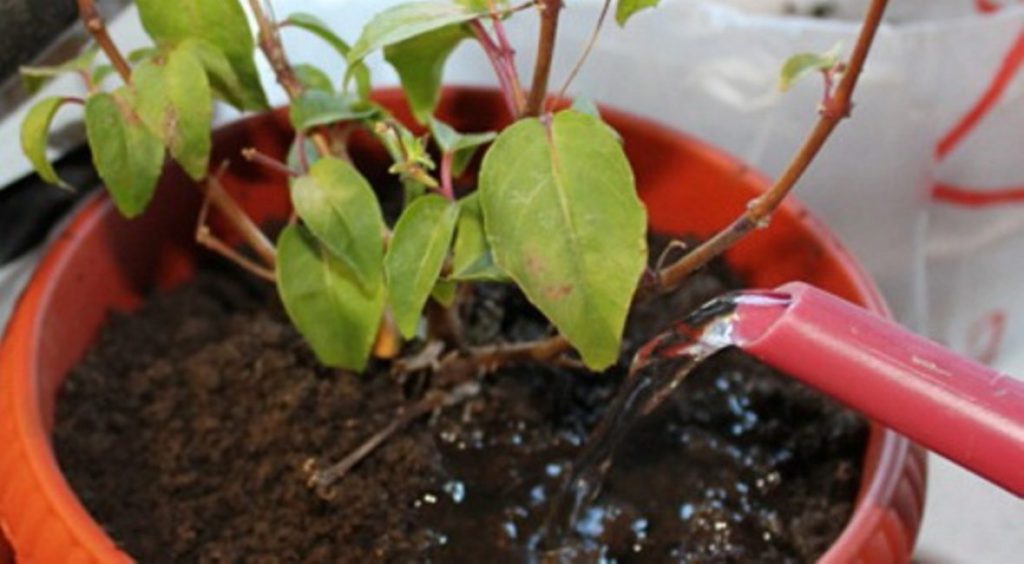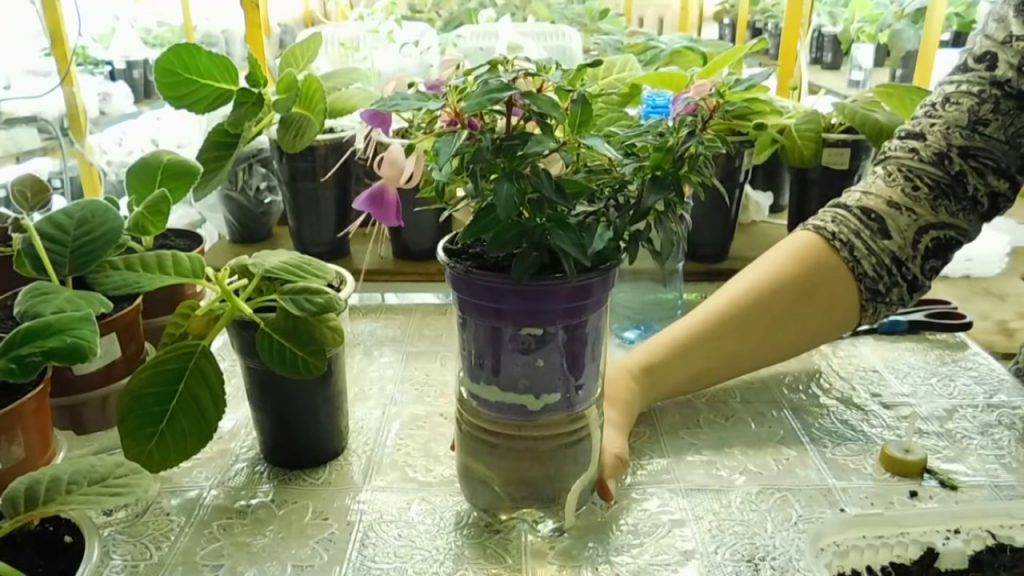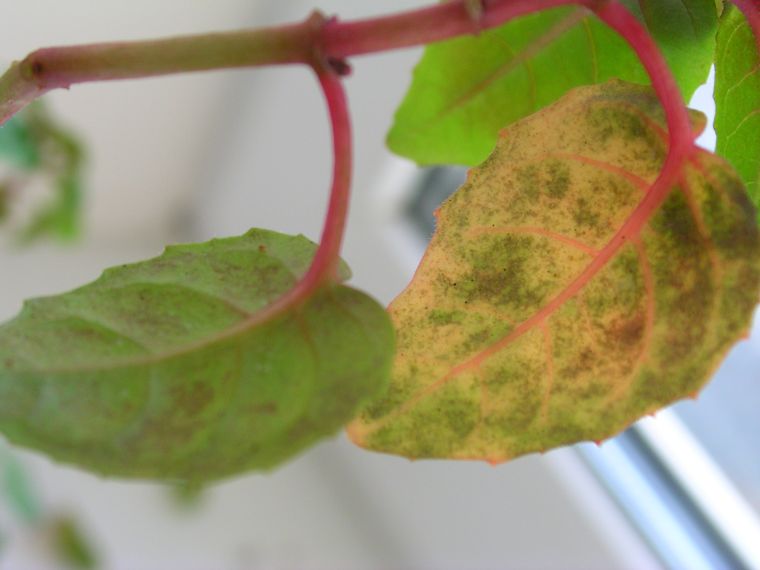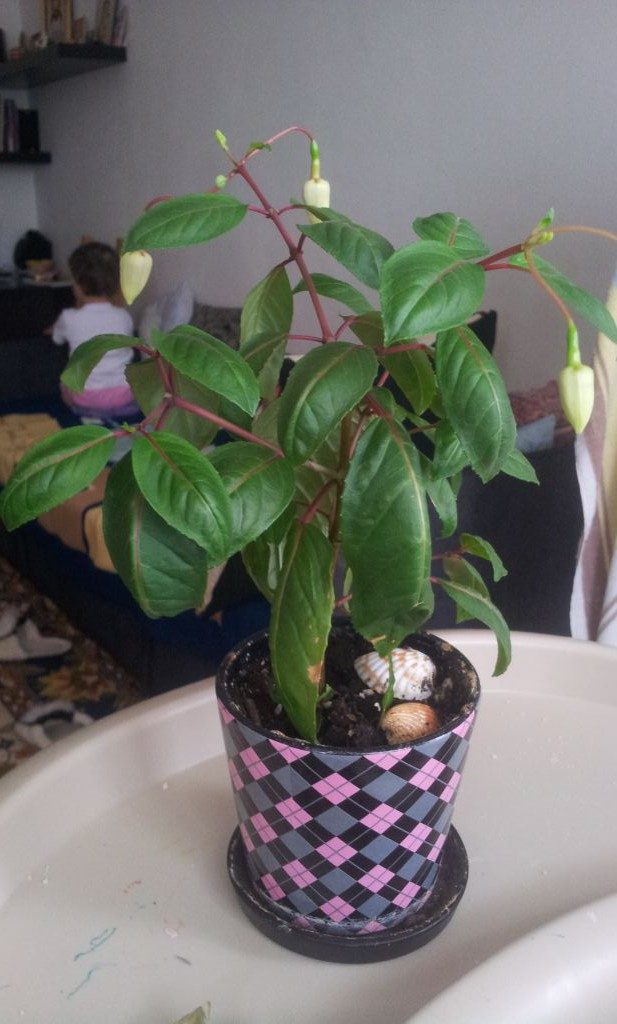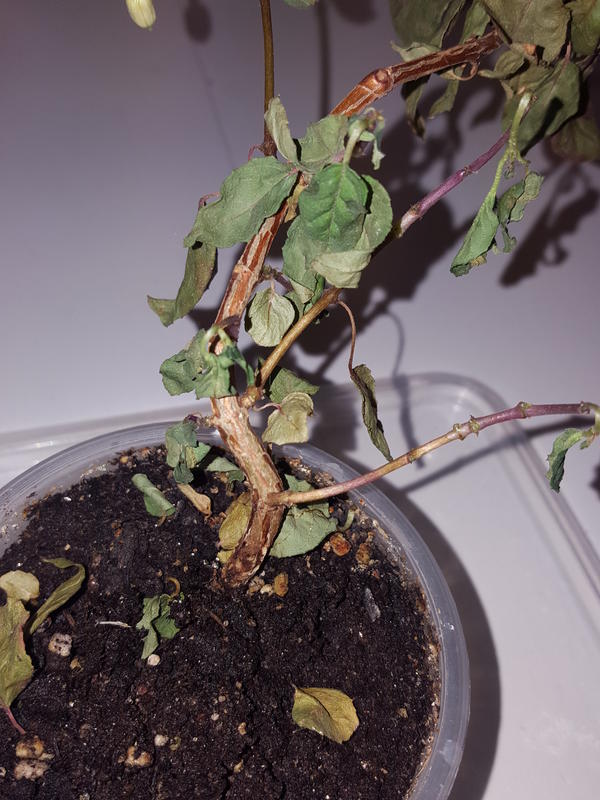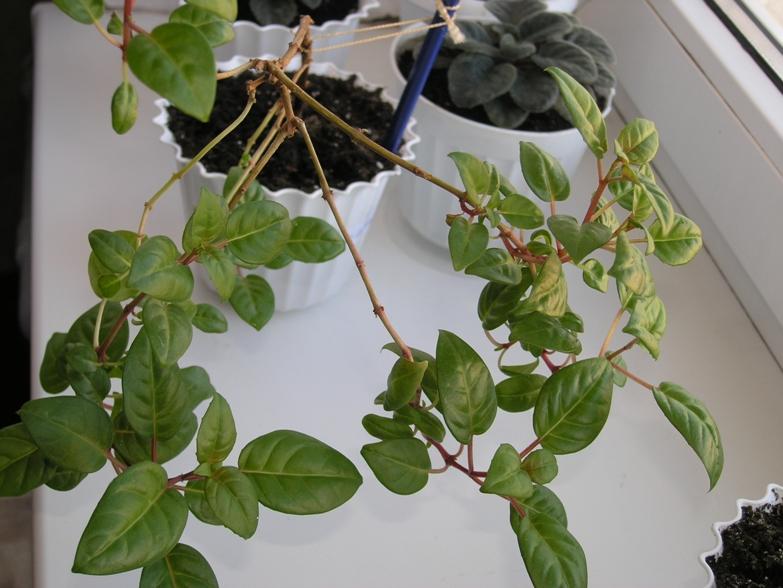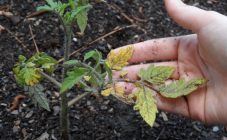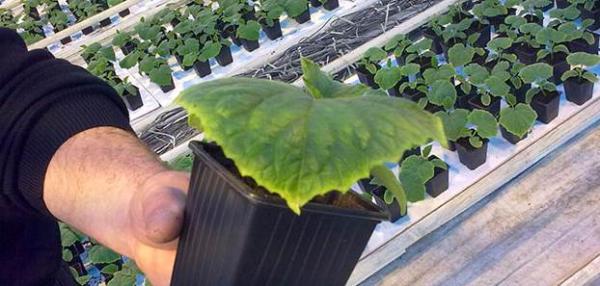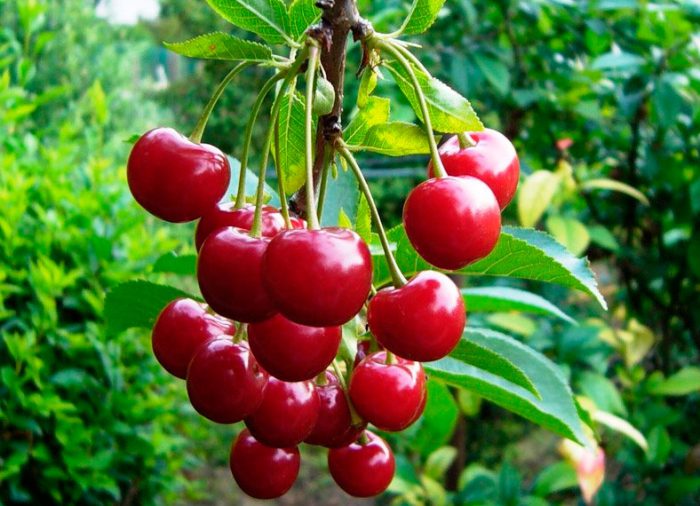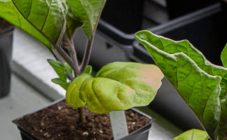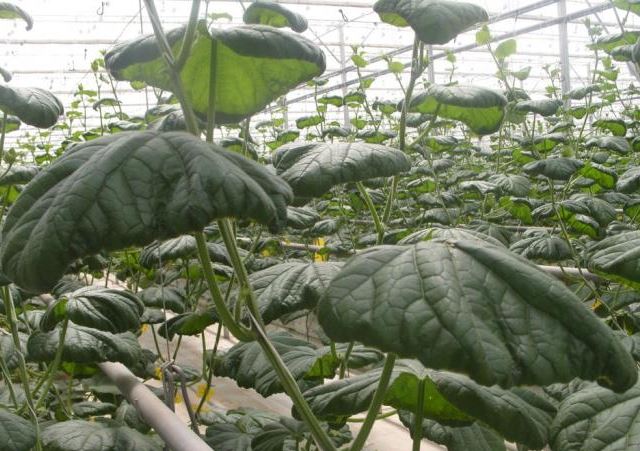Content:
Fuchsia is a popular houseplant, representative of the Cyprus family. It is appreciated for its lush flowers of various colors. However, sometimes the foliage suddenly changes color, tone and begins to die off. And here it is important to figure out as soon as possible what to do if the leaves begin to wither.
Fuchsia flower: how to care at home
Fuchsia care consists in creating suitable conditions for its growth and development:
- maintaining optimal temperature conditions;
- regular watering;
- feeding.
Young cuttings are placed in small pots, which increase in volume as they grow. Immediately after planting, they are not fed, because the fresh soil is saturated with the necessary elements.
Particular attention is paid to the formation of the bush. Some fuchsia varieties grow up to three meters in height. To prevent active stretching, after wintering, dried leaves and flowers are cut off, the stems are shortened by a third. They also remove shoots that grow incorrectly - at an angle or inside the plant. In spring, the tips of the branches are pinched.
Then fuchsia is transplanted if the roots grow through the drainage holes. Too spacious pots are not used. In such containers, the green mass increases to the detriment of flowering. Sand and humus are added to the soil mixture to make it looser.
Fuchsia is considered a finicky flower, but it is not so difficult to care for it. Maintain a comfortable temperature, adequate lighting, water and fertilize. The first thing to do when the fuchsia withers or throws off the leaves is to review the care measures.
Requirements for temperature and watering
The optimum temperature during the period of active vegetation and flowering is + 18 ... + 25 ° С. In hot weather (above + 30 ° C), leaf fall is observed. Plants can dry out. Direct sunlight also has an adverse effect. It is better to cover the windows with curtains.
In autumn, the temperature is lowered to + 10 ... + 12 ° C, because the plant begins a dormant phase. It should gain strength to bloom in the new season. If it gets hotter, the leaves will be crushed and the flower will get sick.
Fuchsia constantly needs sufficient watering, except in winter. The earth is moistened as soon as the topsoil dries up - approximately every 3-4 days. It is necessary to maintain a balance - the plant does not tolerate drought, but does not like excess water either. If liquid accumulates in the bottom pan of the pot, drain it immediately. In winter, the frequency of watering is reduced to 2-3 times a month. The optimum room humidity is 50-60%.
When flooding, the following signs appear:
- sluggish stems, leaves and inflorescences;
- brown spots on the shoots.
How to reanimate fuchsia correctly:
- move to shadow;
- remove excess water by placing a paper towel or container with sand under the pot;
- transplant into new soil - light, saturated with oxygen.
In advanced cases, when the flower can no longer be saved, only cuttings can help.
The plant accepts well spraying of green mass during the growing season. The procedure is performed early in the morning or late in the evening when there is no direct sun.
Lighting requirements
For the normal growth of fuchsia, a sufficient amount of scattered light is needed. The pot should not be placed directly in the sun. She does not like heat - the leaves can turn yellow. The flower is placed in the eastern or western part of the house. If the windows face south, they shade it, and if they face north, they illuminate it with fluorescent lamps.
Fertilization and feeding rules for fuchsia
The plant is regularly fed. The exception is winter time. Gardening stores sell fertilizers for fuchsias and flowering plants.
The nutrient mixture is used every two weeks. It is diluted in water according to the instructions and used instead of regular watering. Before flowering, you can spray the leaves with such a solution. After wilting, no top dressing is applied. Then the process is resumed.
Common mistakes when growing fuchsia
One of the most frequent questions of novice gardeners is why fuchsia leaves turn yellow and what should be done in this case. The reason lies in excessive moisture. Roots do not receive oxygen from moist soil. The leaves first wither, then fall off. Watering should be adjusted and the soil moistened when the top layer is dry.
In addition, growers often face the following problems:
- Lack of flowers - possible reasons: lack of light or feeding, untimely pinching. Sluggish leaves and buds are removed, old branches are cut in the spring. Flowers always form on new shoots. Also, the plant is fed with fertilizers for flowering, which are bought in specialized stores.
- Dropping buds is a consequence of improper growing conditions. This may be a lack of light, drying out, excess moisture, overheating, or moving the flower to a new place. If you just bought fuchsia, it needs to acclimatize. During this period, she sheds not only buds, but also leaves.
- Dull flowers - indicates a lack of nutrients or overly alkaline soil. If the flowers turn pale after transplanting, do not worry - the plant takes root in a new place. Over time, it will return to normal.
- Drying of the tips of the leaves - this phenomenon occurs due to damage to the roots (overheating, illness, excessive moisture), a sharp change in the microclimate (from a wet room to a dry one), sunburn or frostbite. Perhaps pests have started - a tick or whitefly. Then the plant is treated with drugs in accordance with the instructions.
- Leaves curl - the flower demonstrates that the growing conditions are not suitable for it: temperature or light. They also curl up when the whitefly appears. In this case, the plant is washed with soapy water.
The cause of all these problems is improper care. First you need to understand exactly where the mistake was made, and then quickly fix it. If this is not done, the flower will die.
Fuchsia diseases: why do leaves turn yellow and fall?
Novice florists constantly have a question - fuchsia has dropped its leaves, what to do. The reasons are different, the development of diseases is possible, although she suffers from them quite rarely.
What to do if fuchsia leaves fall:
- Small dewdrops or spots of a powdery structure on the leaves - excessive watering. The flower is treated with a Fundazole solution (in a ratio of 1 to 11).
- Yellowing of the leaves is a sign of chlorine. It occurs with waterlogging, lack of minerals (nitrogen or magnesium).
- The roots have turned brown (they are white when healthy). A change in color indicates the appearance of root rot. The reason is excess moisture. The affected areas are removed. If there are a lot of them, the plant dies.
- Yellowed root collar and branches, brown spots in the lower part of the leaf - black stem and rust. All infected parts are removed, the flower is sprayed with drugs - "Topaz", "Vectra" or "Strobi". Tools that have come into contact with an infected plant must be disinfected.
There may be several reasons why fuchsia begins to shed leaves:
- Moving to another room. The plant takes some time to get used to the new lighting.
- Improper watering. With an excess of moisture, the root system rots. To solve the problem, remove the fuchsia from the pot and cut off the damaged parts. If you do not take any measures, the plant dies.
- Drought also leads to leaf fall. Then you need to gradually moisten the soil. You cannot pour out a lot of water at once. If the fuchsia dries up, the first thing to do is to adjust the watering. The plant negatively perceives both deficiency and excess of moisture.
Useful tips for flower growers
A few useful tips to help you avoid mistakes when growing fuchsia:
- In summer, the root system overheats. To avoid this, the flower is planted in ceramic pots with thick walls.
- In order not to expose the plant to stress, it should not be moved to another place without special need.
- A lack of light leads to a strong elongation of shoots to the detriment of flowering. When such a tendency appears, the fluorescent lamp should be periodically turned on.
- An excess of fertilizers, especially nitrogen, leads to an increase in green mass. Therefore, feeding more often than once every two weeks is not recommended.
An important nuance when growing fuchsia is creating the right conditions in the winter. It is better to place the pot in the basement or pantry, because the flower does not need light at this time. An insulated balcony is also suitable, but direct sun exposure is undesirable. The main reason why fuchsia dries during the rest period is an excess of light and water. Because of this, spots with a yellow border are formed.
Thus, there are several reasons why fuchsia leaves wither and fall. This is a violation of the rules of care or illness. If you take action in time, the plant will quickly recover.

